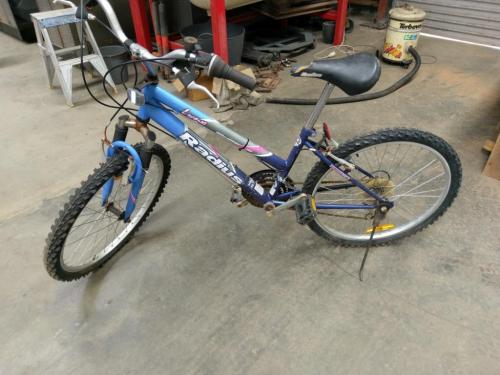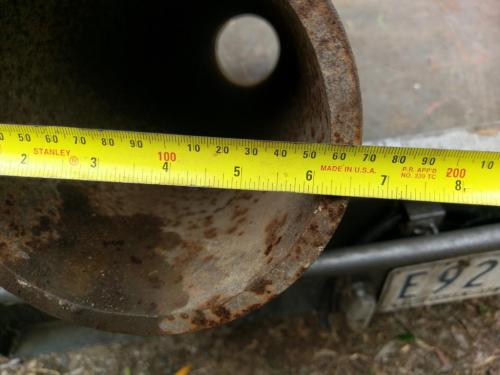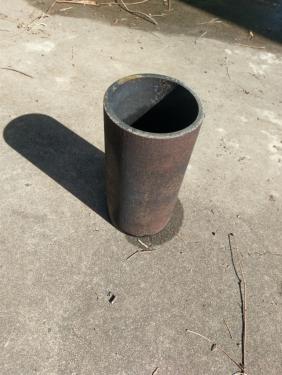03-08-2018, 02:56 AM
I've been buried in the workshop for the past 3 weeks like a mad inventor, haven't taken the time to post the project before now but the paint is drying and I can relax a little so I'll plot my progress retrospectively.
My eldest daughter has a significant birthday this year so I decided to do something a bit special for her, especially as she has two sisters getting married also this year we thought it best that her birthday didn't go unsung.
She did a pottery course last year and said she would love to do some pottery. The place that ran the classes has a kiln that their students can use for their own work so I thought a potter's wheel to use at home would make a great gift.
I trolled the internet for several weeks, learning as much as I could about potter's wheels so I didn't build something completely useless and getting some ideas of what design to go with. Lots and lots of different types out there but with two main themes- there's the common, modern electric type with either a variable or fixed-speed electric drive contained under a unit that you sit in front of, and there's what is called a 'kick wheel' which has a large flywheel that you spin with your feet, connected by a vertical shaft to the 'throwing head' (which is apparently the proper name for the spinning disc that you put the mud on). There are a few variations on the 'kick wheel' theme, most commonly a treadle of some sort that spins the flywheel by a foot-operated crank and lever. I ummed and ahhed for several weeks over what sort of design to go with. Then I came across this video on Youtube:
https://www.youtube.com/watch?v=uHj_BysG4Ww
I decided to borrow this guy's idea and make a bicycle-powered potter's wheel of my own design. We all know how efficient a 'design-as-you-go' approach is, right?
One of the first tasks was to rescue an old cast-iron tractor seat that used to belong to a glide swing (one of those double-ended playground swings) that was on our property when we bought it, the kids used to play on it all the time when they were little and it got cut up for scrap after they all outgrew it. I've been hanging on to the tractor seats for just such a project. Had to cut the remains of the welded-on swing frame from underneath it, then made my first ever foray into the world of electrolytic rust removal. It went into the tub in the evening looking like it had sat in the weather for decades (which it had), came out the next morning looking like this

I was prepared to forgive it the little broken bit.
A trip to the scrap metal yard cleaned up my accumulated metal waste, including a large drum of swarf, and scored me (along with a pair of forklift tynes for other projects) the power unit for the potters wheel

and a chunk of heavy-wall pipe perfect for the large crucible i'm going to need to cast the throwing head and the gear blanks. I've looked out for a bit of pipe like this every time I've been to the scrap yard and this time I SCORED!

I cut a suitable length in the bandsaw then put it in the magic bath with an anode suspended up the middle of the pipe to de-rust inside and out. Another overnight job, cleaned up nicely.

Welded a piece of plate on for a base, some angle iron for a spout and some lugs to lift it by. I'll try and remember to take a photo of the finished crucible. It ended up about as big as my foundry furnace will take and still have room for a bit of fire.
Got to go and feed cows and chooks, I'll post some more on this tonight if I get the chance.
My eldest daughter has a significant birthday this year so I decided to do something a bit special for her, especially as she has two sisters getting married also this year we thought it best that her birthday didn't go unsung.
She did a pottery course last year and said she would love to do some pottery. The place that ran the classes has a kiln that their students can use for their own work so I thought a potter's wheel to use at home would make a great gift.
I trolled the internet for several weeks, learning as much as I could about potter's wheels so I didn't build something completely useless and getting some ideas of what design to go with. Lots and lots of different types out there but with two main themes- there's the common, modern electric type with either a variable or fixed-speed electric drive contained under a unit that you sit in front of, and there's what is called a 'kick wheel' which has a large flywheel that you spin with your feet, connected by a vertical shaft to the 'throwing head' (which is apparently the proper name for the spinning disc that you put the mud on). There are a few variations on the 'kick wheel' theme, most commonly a treadle of some sort that spins the flywheel by a foot-operated crank and lever. I ummed and ahhed for several weeks over what sort of design to go with. Then I came across this video on Youtube:
https://www.youtube.com/watch?v=uHj_BysG4Ww
I decided to borrow this guy's idea and make a bicycle-powered potter's wheel of my own design. We all know how efficient a 'design-as-you-go' approach is, right?
One of the first tasks was to rescue an old cast-iron tractor seat that used to belong to a glide swing (one of those double-ended playground swings) that was on our property when we bought it, the kids used to play on it all the time when they were little and it got cut up for scrap after they all outgrew it. I've been hanging on to the tractor seats for just such a project. Had to cut the remains of the welded-on swing frame from underneath it, then made my first ever foray into the world of electrolytic rust removal. It went into the tub in the evening looking like it had sat in the weather for decades (which it had), came out the next morning looking like this
I was prepared to forgive it the little broken bit.
A trip to the scrap metal yard cleaned up my accumulated metal waste, including a large drum of swarf, and scored me (along with a pair of forklift tynes for other projects) the power unit for the potters wheel
and a chunk of heavy-wall pipe perfect for the large crucible i'm going to need to cast the throwing head and the gear blanks. I've looked out for a bit of pipe like this every time I've been to the scrap yard and this time I SCORED!
I cut a suitable length in the bandsaw then put it in the magic bath with an anode suspended up the middle of the pipe to de-rust inside and out. Another overnight job, cleaned up nicely.
Welded a piece of plate on for a base, some angle iron for a spout and some lugs to lift it by. I'll try and remember to take a photo of the finished crucible. It ended up about as big as my foundry furnace will take and still have room for a bit of fire.
Got to go and feed cows and chooks, I'll post some more on this tonight if I get the chance.
Lathe (n); a machine tool used in the production of milling machine components.
Milling Machine (n); a machine tool used in the production of lathe components.
Milling Machine (n); a machine tool used in the production of lathe components.






![[Image: TomsTechLogo-Profile.png]](http://tomstechniques.com/wp-content/uploads/2013/11/TomsTechLogo-Profile.png)

 I perused a couple of websites and between various sources of info I was able to understand it enough to perform the tasks. I can't claim to properly understand the relationship between the gear surfaces that this creates. This is called a 'parallel depth' bevel, apparently a bit of a compromise tooth form, to get a true bevel tooth form requires specialised equipment where the blank moves during the cut. Maybe I'll try that next time
I perused a couple of websites and between various sources of info I was able to understand it enough to perform the tasks. I can't claim to properly understand the relationship between the gear surfaces that this creates. This is called a 'parallel depth' bevel, apparently a bit of a compromise tooth form, to get a true bevel tooth form requires specialised equipment where the blank moves during the cut. Maybe I'll try that next time 